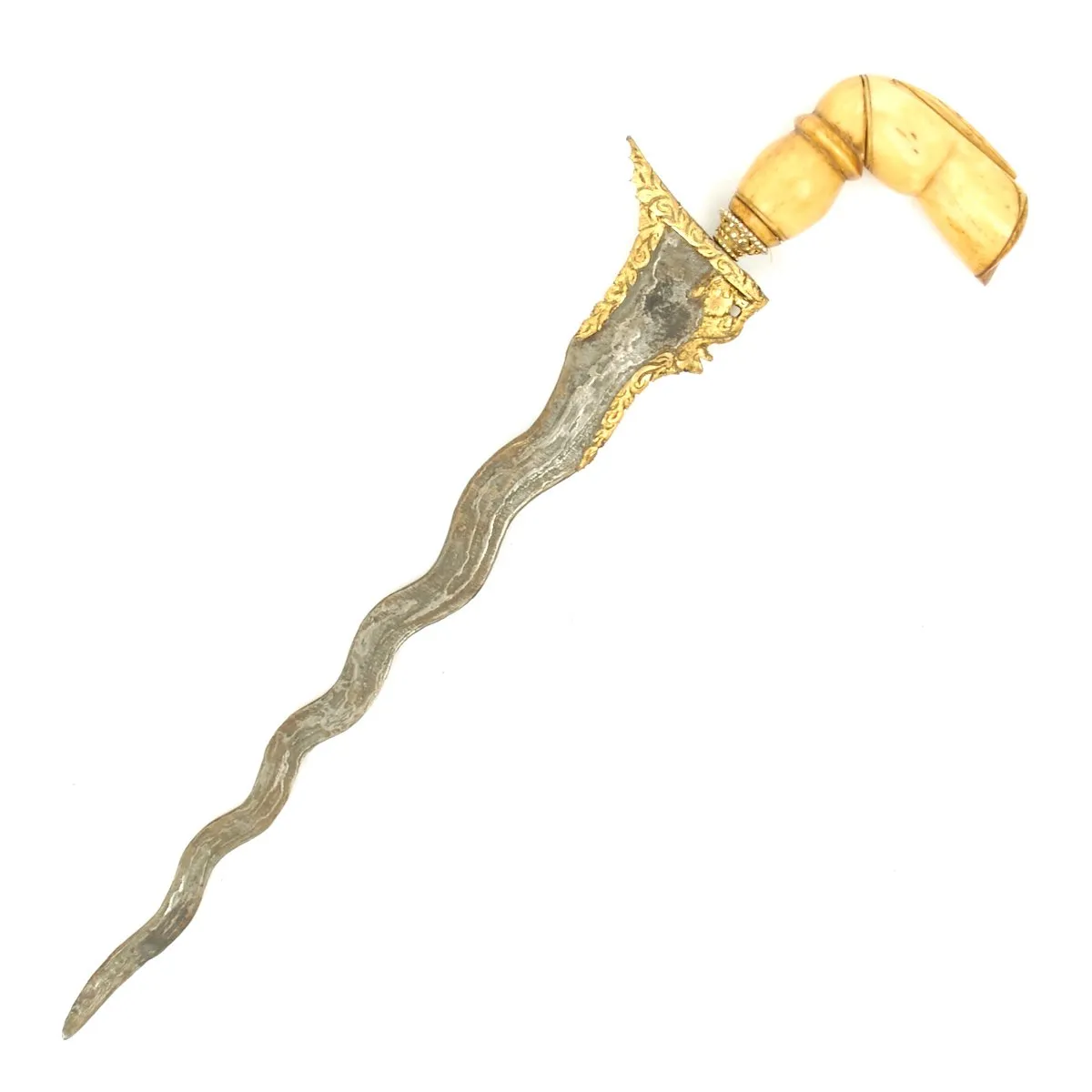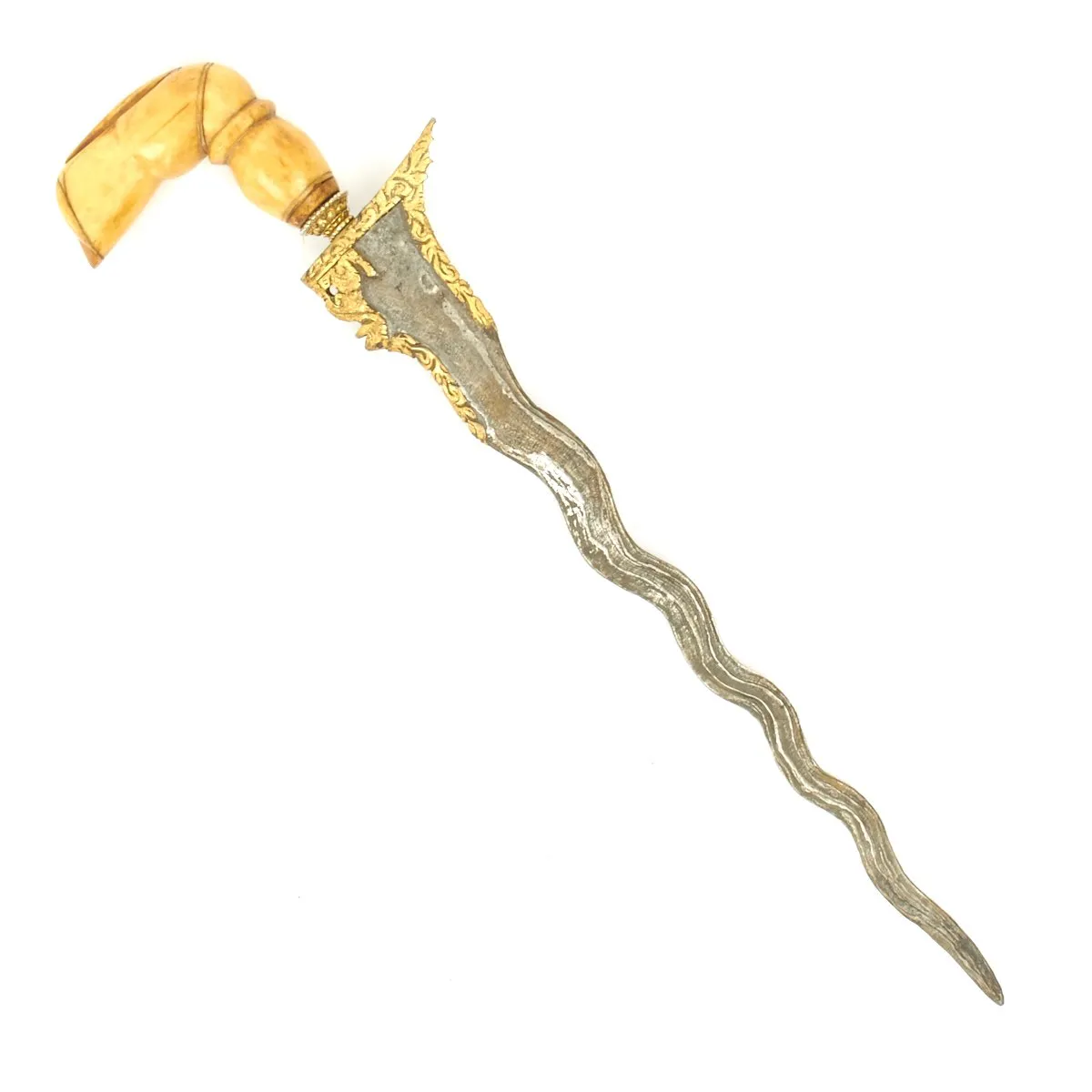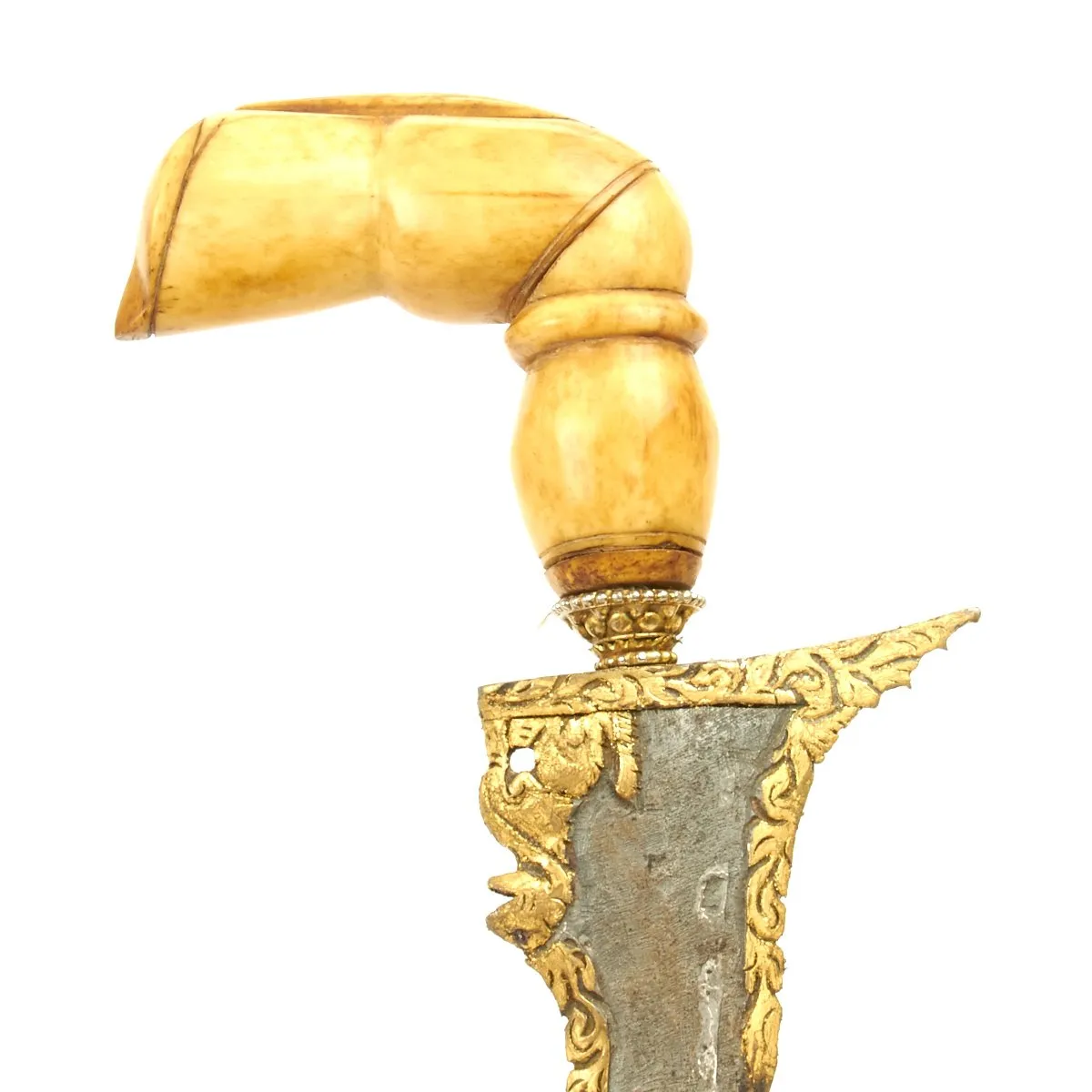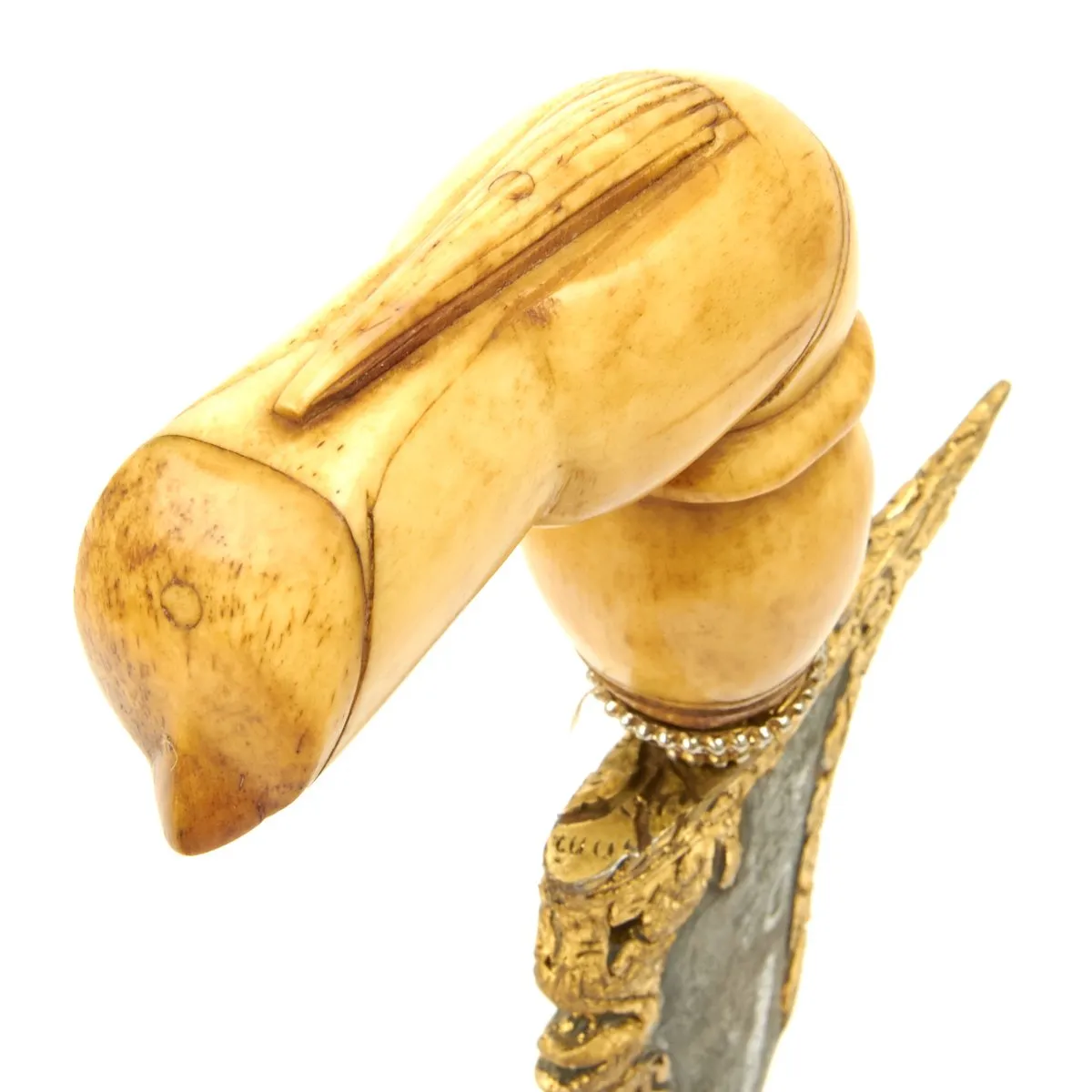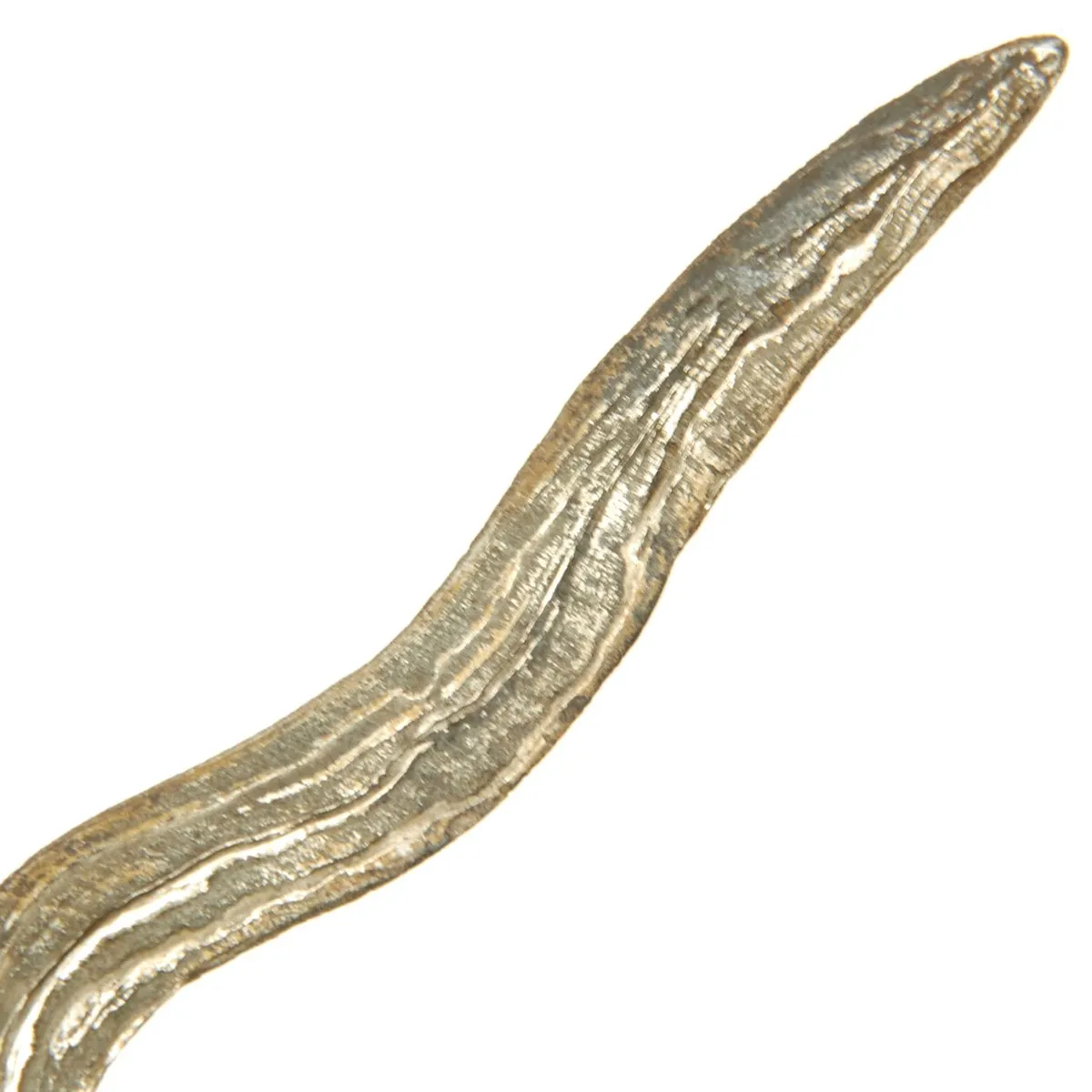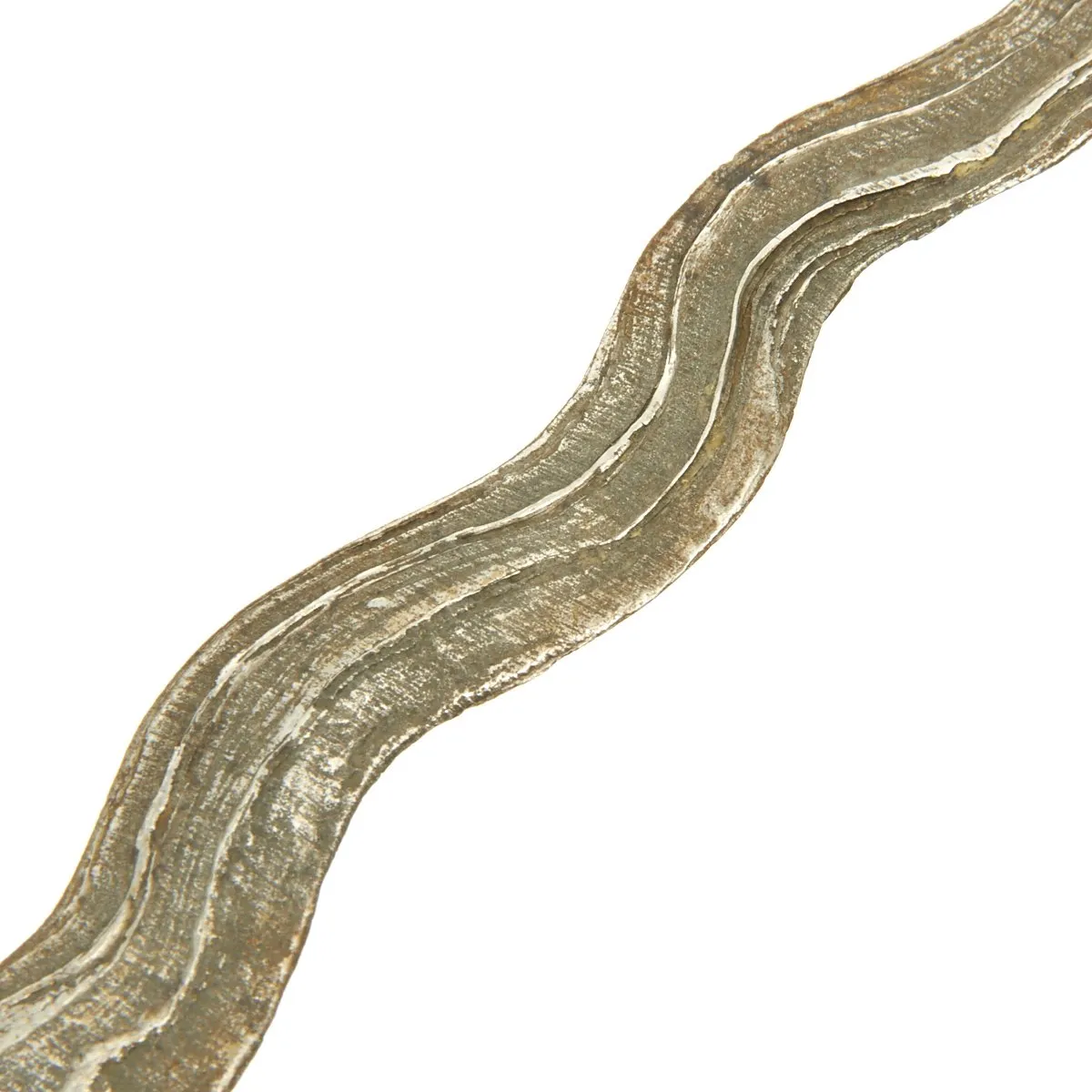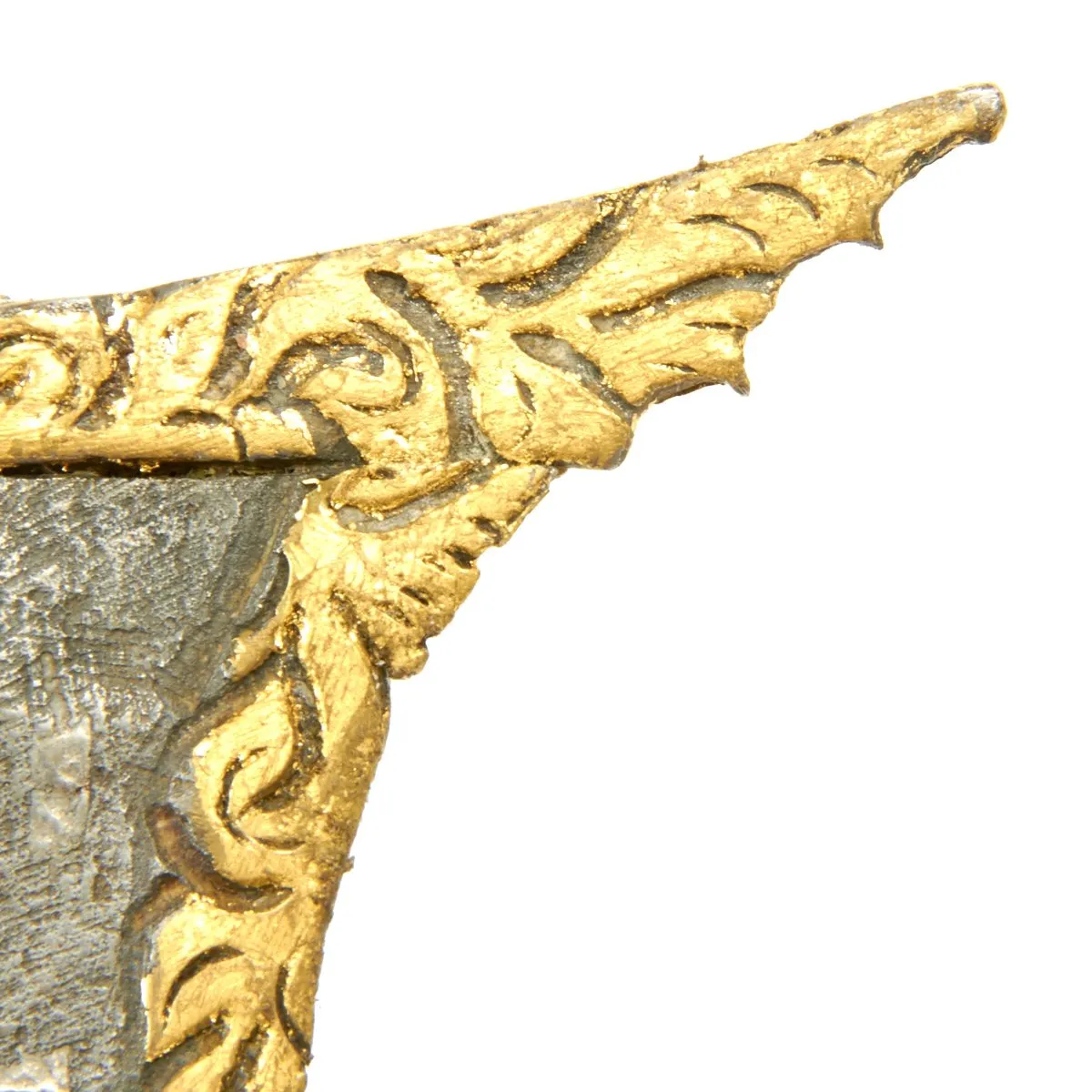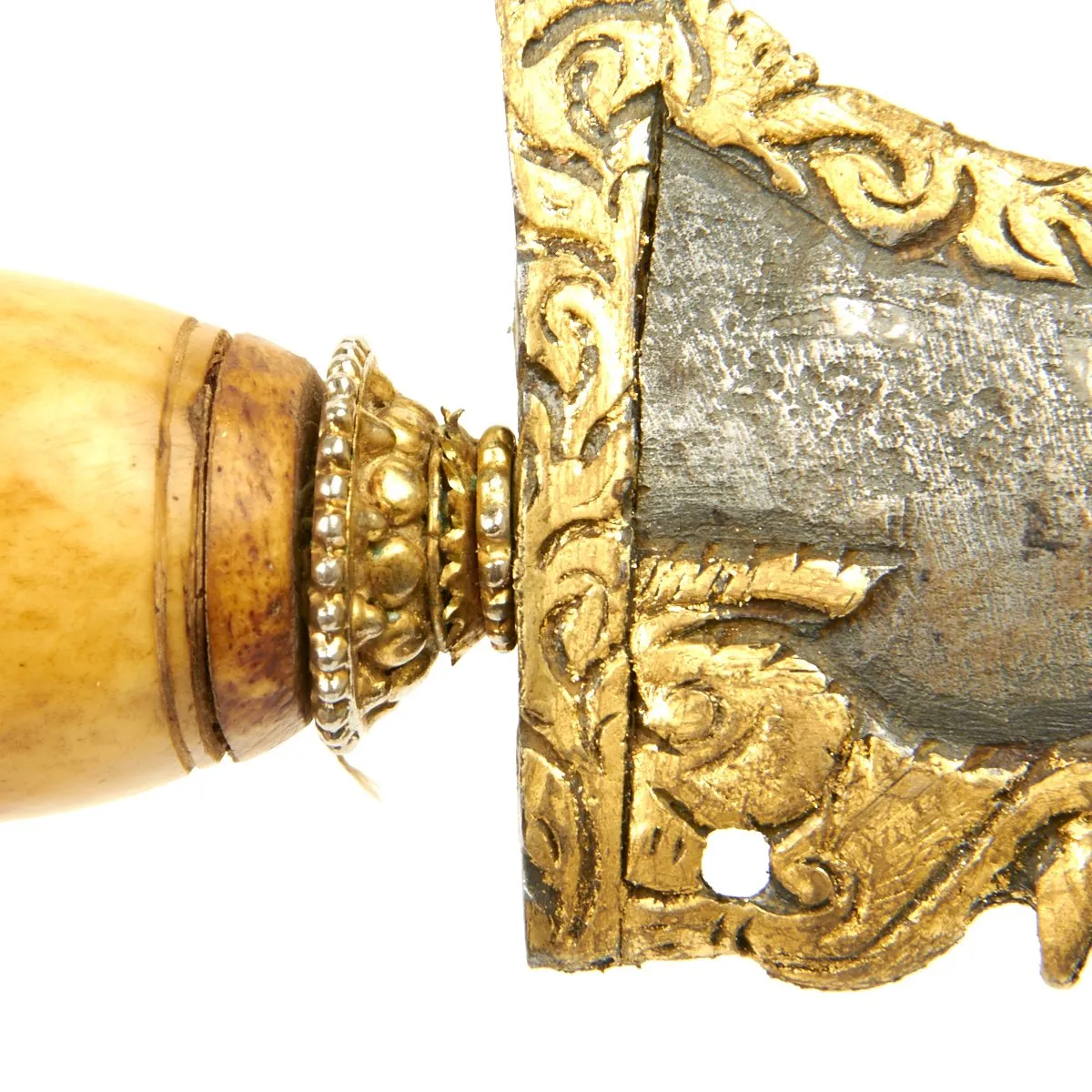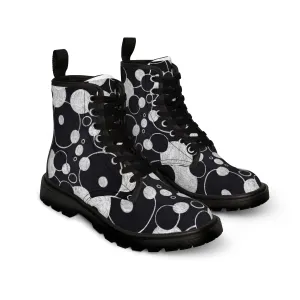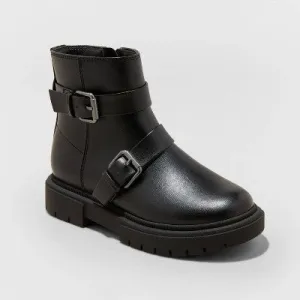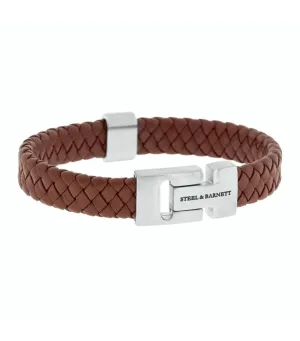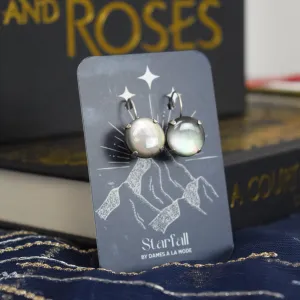Original Item: One Only. The kris or keris is a prized asymmetrical dagger most strongly associated with the culture of Indonesia, but also indigenous to Malaysia, Thailand, Brunei and Singapore. It is known as kalis in the southern Philippines. The kris is famous for its distinctive wavy blade.
A kris can be divided into three parts: bilah (blade), hulu (hilt), and warangka (sheath). These parts of the kris are objects of art, often carved in meticulous detail and made from various materials: metal, precious or rare types of wood, or gold or ivory. A kris's aesthetic value covers the dhapur (the form and design of the blade, with around 150 variants), the pamor (the pattern of metal alloy decoration on the blade, with around 60 variants), and tangguh referring to the age and origin of a kris.
Both a weapon and spiritual object, kris are often considered to have an essence or presence, considered to possess magical powers, with some blades possessing good luck and others possessing bad. Kris are used for display, as talismans with magical powers, weapons, a sanctified heirloom (pusaka), auxiliary equipment for court soldiers, an accessory for ceremonial dress, an indicator of social status, a symbol of heroism, etc. Legendary kris that possess supernatural power and extraordinary ability were mentioned in traditional folktales, such as those of Mpu Gandring, Taming Sari, and Setan Kober.
This example is not a modern tourist item, it is the real thing dating from the mid 19th century, in fact the exceptional blade may date as much earlier, perhaps to circa 1700.
This is a most ornate example clearly having belonged to someone of importance, the nearly 14" blade (bilah) has the traditional Kris snake like design. A fine is that the blade has been hammered together both regular mined iron and meteor-iron which has a high nickel content resulting is a most attractive mottled finish showing the grain of the combined metals that have been hot forged into steel. This is known as the pamor.
The most notable feature is found on the blade nearest the hilt. It is overlaid with 24 carat gold including a stylized Lion which if you look carefully has red Ruby gemstone eyes. This is not only just lovely, it lacks the original wood scabbard which in this case is a good thing as unsheathed is displays at its very best.
One key to identify older blades such as this is to be able to find the join at the hilt end of the blade as the horn was always added as a separate piece. Later examples and modern tourist pieces were always had blades made from just one sheet of steel.
The kingfisher style hilt (hulu) appears to be ivory but in fact is beautifully carved polished bone. Each section of the Dutch East Indies produced the traditional Kris Daggers but this example comes from the island of "BUGIS" according to our Ethnographical expert.
Only just emerging from an old collection in New York State.
Magnificent Kris dagger, extremely ornate with early blade perhaps circa 1820. Blade 14" overall length 17". One of the very best, highest quality Kirses we have ever encountered.

 Cart(
Cart(